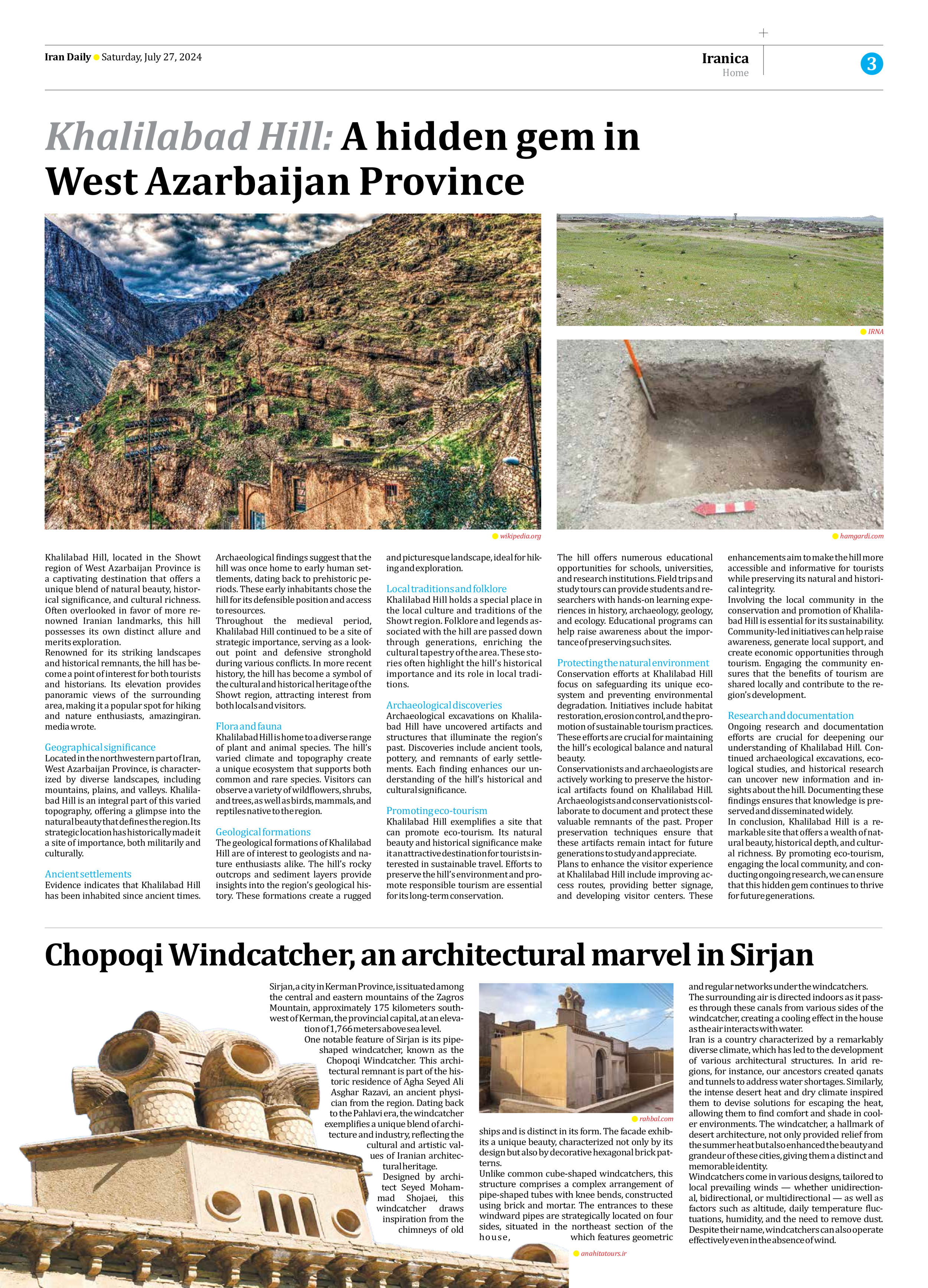
Chopoqi Windcatcher, an architectural marvel in Sirjan
Sirjan, a city in Kerman Province, is situated among the central and eastern mountains of the Zagros Mountain, approximately 175 kilometers southwest of Kerman, the provincial capital, at an elevation of 1,766 meters above sea level.
One notable feature of Sirjan is its pipe-shaped windcatcher, known as the Chopoqi Windcatcher. This architectural remnant is part of the historic residence of Agha Seyed Ali Asghar Razavi, an ancient physician from the region. Dating back to the Pahlavi era, the windcatcher exemplifies a unique blend of architecture and industry, reflecting the cultural and artistic values of Iranian architectural heritage.
Designed by architect Seyed Mohammad Shojaei, this windcatcher draws inspiration from the chimneys of old ships and is distinct in its form. The facade exhibits a unique beauty, characterized not only by its design but also by decorative hexagonal brick patterns.
Unlike common cube-shaped windcatchers, this structure comprises a complex arrangement of pipe-shaped tubes with knee bends, constructed using brick and mortar. The entrances to these windward pipes are strategically located on four sides, situated in the northeast section of the house, which features geometric and regular networks under the windcatchers.
The surrounding air is directed indoors as it passes through these canals from various sides of the windcatcher, creating a cooling effect in the house as the air interacts with water.
Iran is a country characterized by a remarkably diverse climate, which has led to the development of various architectural structures. In arid regions, for instance, our ancestors created qanats and tunnels to address water shortages. Similarly, the intense desert heat and dry climate inspired them to devise solutions for escaping the heat, allowing them to find comfort and shade in cooler environments. The windcatcher, a hallmark of desert architecture, not only provided relief from the summer heat but also enhanced the beauty and grandeur of these cities, giving them a distinct and memorable identity.
Windcatchers come in various designs, tailored to local prevailing winds — whether unidirectional, bidirectional, or multidirectional — as well as factors such as altitude, daily temperature fluctuations, humidity, and the need to remove dust. Despite their name, windcatchers can also operate effectively even in the absence of wind.







